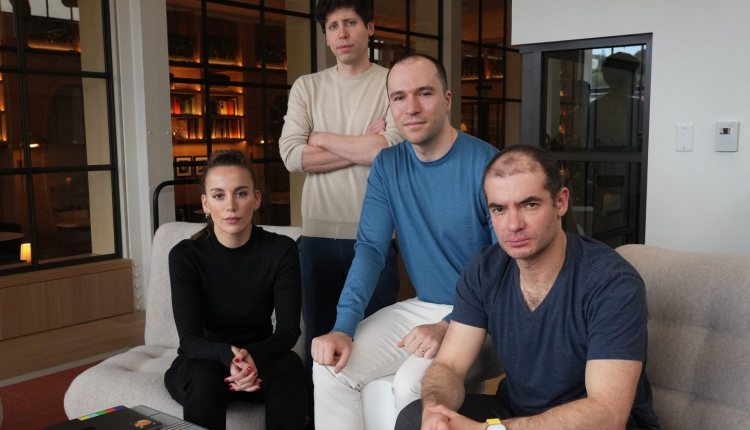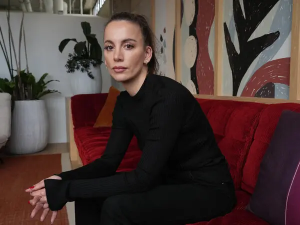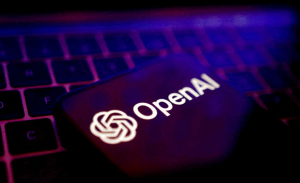
OpenAI Faces Big Changes in Leadership
The OpenAI Exodus and Its Impact on the AI Industry
In the world of AI, few organizations have garnered as much attention as OpenAI. The company that brought us ChatGPT, among other groundbreaking AI models, now finds itself in the spotlight for a different reason: a wave of executive resignations. From Chief Technology Officer (CTO) Mira Murati to Chief Research Officer Bob McGrew and VP of Research Barrett Zoph, key members of OpenAI’s leadership have decided to step away. These departures have raised questions about the company’s future, its shifting priorities, and the internal dynamics driving these exits.
Why is Everyone Leaving?
This sudden leadership exodus, while dramatic, is not entirely unexpected. The AI industry is notoriously fast-paced, and OpenAI has been undergoing rapid changes, especially as it transitions from a nonprofit research lab to a for-profit entity. This restructuring is likely a significant factor behind the recent resignations.
In particular, Mira Murati’s departure sent shockwaves through the tech world. As CTO, Murati was instrumental in leading the team behind ChatGPT, an AI model that has become a household name and a benchmark for generative AI. Her exit came just as OpenAI was making this major transition, signaling that there might have been internal disagreements about the company’s new direction. After all, switching from nonprofit to for-profit brings along a host of challenges, including prioritizing profitability, securing investments, and potentially compromising the ethical considerations that the company was originally founded on.
A Shift to For-Profit: The Root Cause?
At the heart of these changes is OpenAI’s decision to transition into a for-profit benefit corporation. This move, which allows the company to attract more significant investments, has raised eyebrows within the tech industry. OpenAI has always positioned itself as a company dedicated to advancing AI in a safe and ethical manner, but the shift to a for-profit structure could lead to conflicts between ethical AI development and financial goals.
This restructuring also introduces new corporate governance rules, with Sam Altman, OpenAI’s CEO, now receiving equity in the company. A new funding round, which could push OpenAI’s valuation to over $150 billion, is contingent on this shift. Such a monumental change often leads to friction within organizations, especially when longstanding leaders like Murati, McGrew, and Zoph, who have dedicated years to OpenAI’s nonprofit mission, feel that their values no longer align with the company’s goals.
Mira Murati: A Major Loss for OpenAI
Mira Murati’s resignation is arguably the most significant of the recent departures. She was a central figure in the development of many of OpenAI’s core technologies, including ChatGPT and GPT-4. For many in the AI industry, Murati was the public face of OpenAI’s technical innovation. Losing a CTO of her stature not only creates a leadership vacuum but also raises concerns about the direction in which OpenAI’s technical development will head next .
Murati’s tenure at OpenAI spanned over six years, during which she oversaw the development of generative AI models that have reshaped industries and created new possibilities in human-AI collaboration. Her expertise in steering these projects to success is irreplaceable, and her departure leaves a significant gap in OpenAI’s leadership team.

Sam Altman acknowledged Murati’s contributions, describing her as instrumental in OpenAI’s growth from an “unknown research lab” to one of the most influential AI companies in the world. However, as the company pursues commercialization, questions linger about how OpenAI will maintain its balance between profitability and its original mission of ethical AI development without Murati’s guiding hand.
The Broader Impact on OpenAI’s Reputation

OpenAI’s rapid growth and influence in the AI industry have made it a pivotal player in discussions about the future of artificial intelligence. With this power comes increased scrutiny, especially as the company shifts to a for-profit model. Ethical considerations have always been a key part of OpenAI’s public image, but critics argue that the pursuit of profits could come at the expense of responsible AI development.
The departure of Murati, McGrew, and Zoph might be seen by some as a sign that OpenAI’s leadership is at odds with the new direction. Internally, the company must now ensure that it can continue to attract top talent and maintain its reputation as a leader in both technical innovation and ethical AI. Externally, competitors such as Anthropic, DeepMind, and xAI are waiting to capitalize on any missteps OpenAI might make during this transition.
What Does This Mean for AI Ethics?
OpenAI was once heralded as a leader in responsible AI development, often positioning itself as the ethical counterbalance to Silicon Valley’s more profit-driven approach. But with these leadership changes and the transition to a for-profit model, some critics are concerned about whether the company will continue to prioritize the safe development of AI. Murati, in particular, was known for her advocacy of ethical considerations in AI development, and her absence raises important questions about whether OpenAI’s moral compass will shift in favor of profitability.
Competitors Eyeing Opportunity
With OpenAI experiencing internal turbulence, other AI companies are poised to take advantage. Competitors such as DeepMind, Anthropic, and Meta AI are investing heavily in generative AI technologies. The resignations give these companies an opening to attract disillusioned OpenAI talent or accelerate their own development efforts. In the race to build the next great AI, any leadership vacuum at OpenAI could be costly in terms of innovation speed and market positioning.
Internal Dynamics: The Human Factor in Leadership Changes
The recent departures at OpenAI highlight the human element often overlooked in corporate narratives. Each executive brings not just skills but personal philosophies and visions for the company’s future. Murati and her colleagues were integral to fostering a collaborative culture and championing ethical AI practices. Their resignations may signal deeper issues, such as burnout or frustration with the direction of the organization. Understanding the emotional landscape within tech companies is essential; leadership shifts often reflect broader struggles related to work-life balance, values alignment, and the pressures of rapid growth.
What’s Next for OpenAI?
OpenAI’s future rests heavily on its ability to navigate this turbulent period. While leadership transitions are common in tech companies, the departure of such prominent figures, particularly at a time of immense structural change, puts OpenAI in a precarious position. Investors, partners, and the broader AI community will be closely watching to see how the company responds.
The promotion of Mark Chen to Senior VP of Research and Jakub Pachocki as Chief Scientist signals a continuity of leadership within OpenAI’s research divisions. However, it remains to be seen whether these new leaders can fill the void left by Murati and her team. OpenAI must also ensure that it does not lose sight of its mission to develop safe and ethical AI technologies while balancing the demands of its new for-profit structure.
The AI Industry at a Crossroads
OpenAI’s leadership changes come at a critical juncture for the AI industry. The rise of generative AI models like ChatGPT has fundamentally altered how businesses operate, and the demand for AI solutions is at an all-time high. As OpenAI continues to push the boundaries of AI research and development, it must also contend with the ethical dilemmas and societal impacts that come with such transformative technologies.
The AI race is heating up, with competitors like Google DeepMind and Anthropic vying for dominance in the space. OpenAI’s ability to maintain its position at the forefront of AI innovation will depend not only on its technology but also on its leadership and ability to navigate the complexities of a for-profit structure.
An End of an Era?
The resignation of Mira Murati, Bob McGrew, and Barrett Zoph signals the end of an era for OpenAI. As the company transitions from a nonprofit research lab to a for-profit benefit corporation, it faces new challenges and opportunities. While these leadership changes might shake the company in the short term, they also offer an opportunity for fresh perspectives and new approaches to AI development.
OpenAI’s ability to stay true to its mission of ethical AI development while scaling its operations and attracting investments will define its future success. The departure of key leaders like Murati leaves many questions unanswered, but one thing is clear: OpenAI is at a crossroads, and the path it chooses will shape the future of artificial intelligence.
